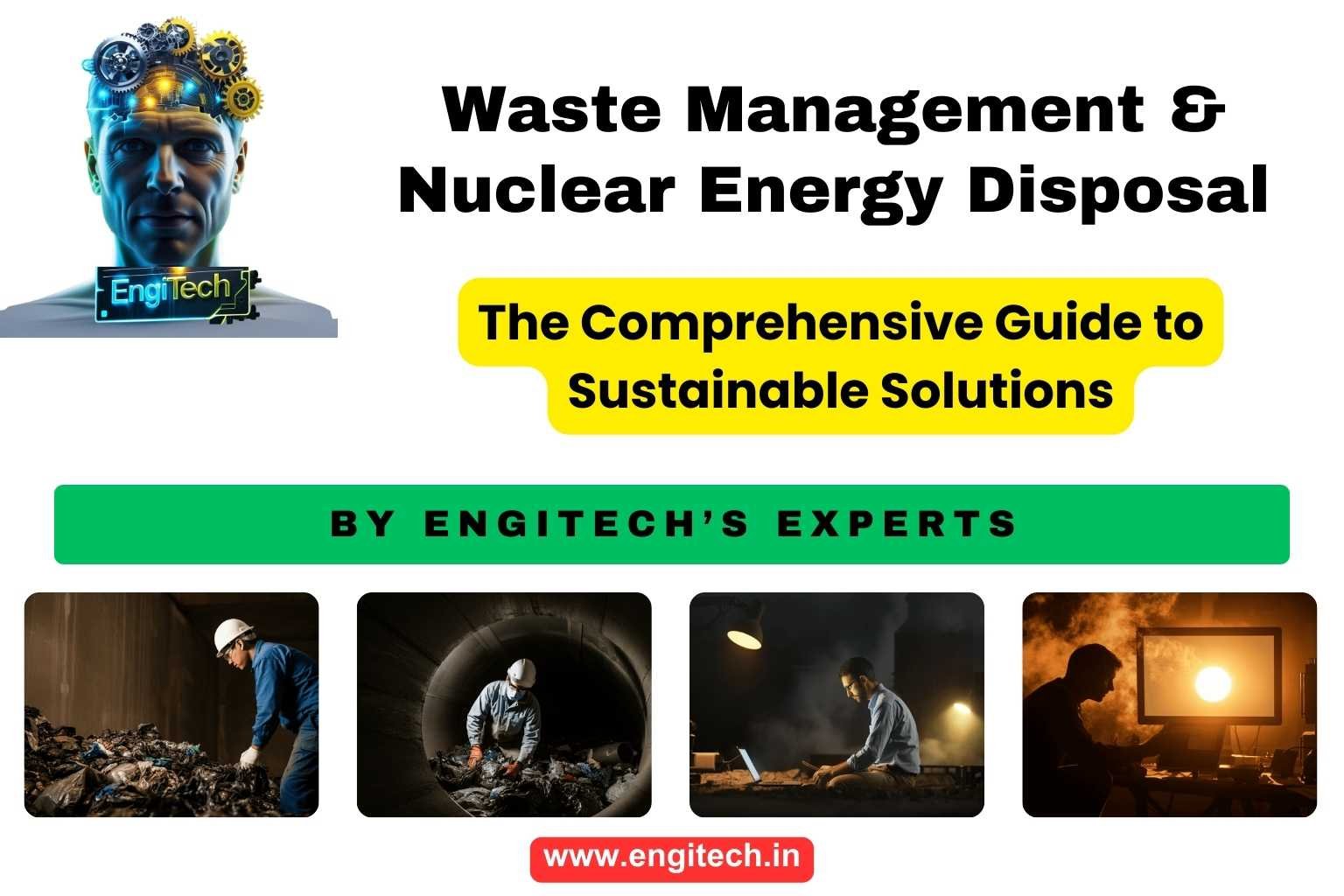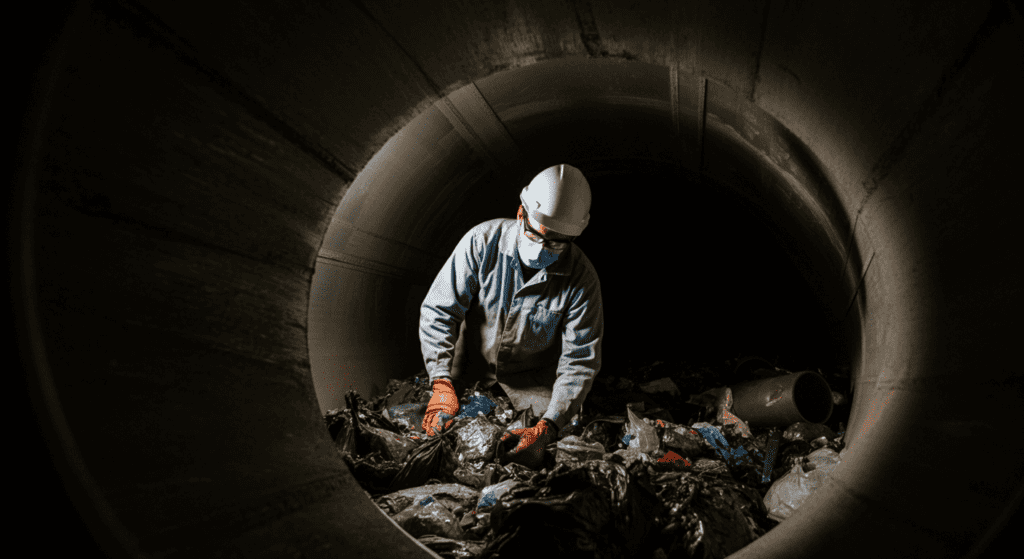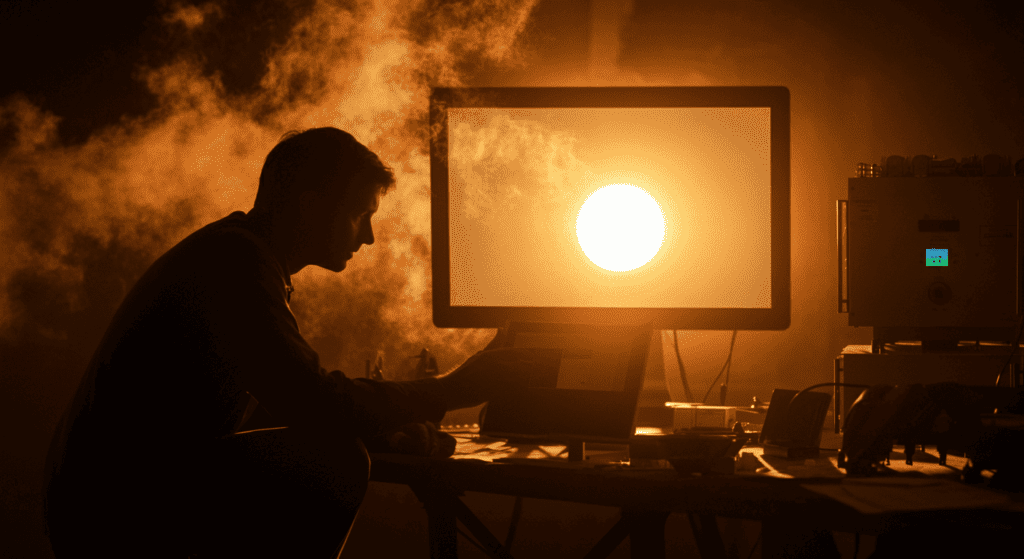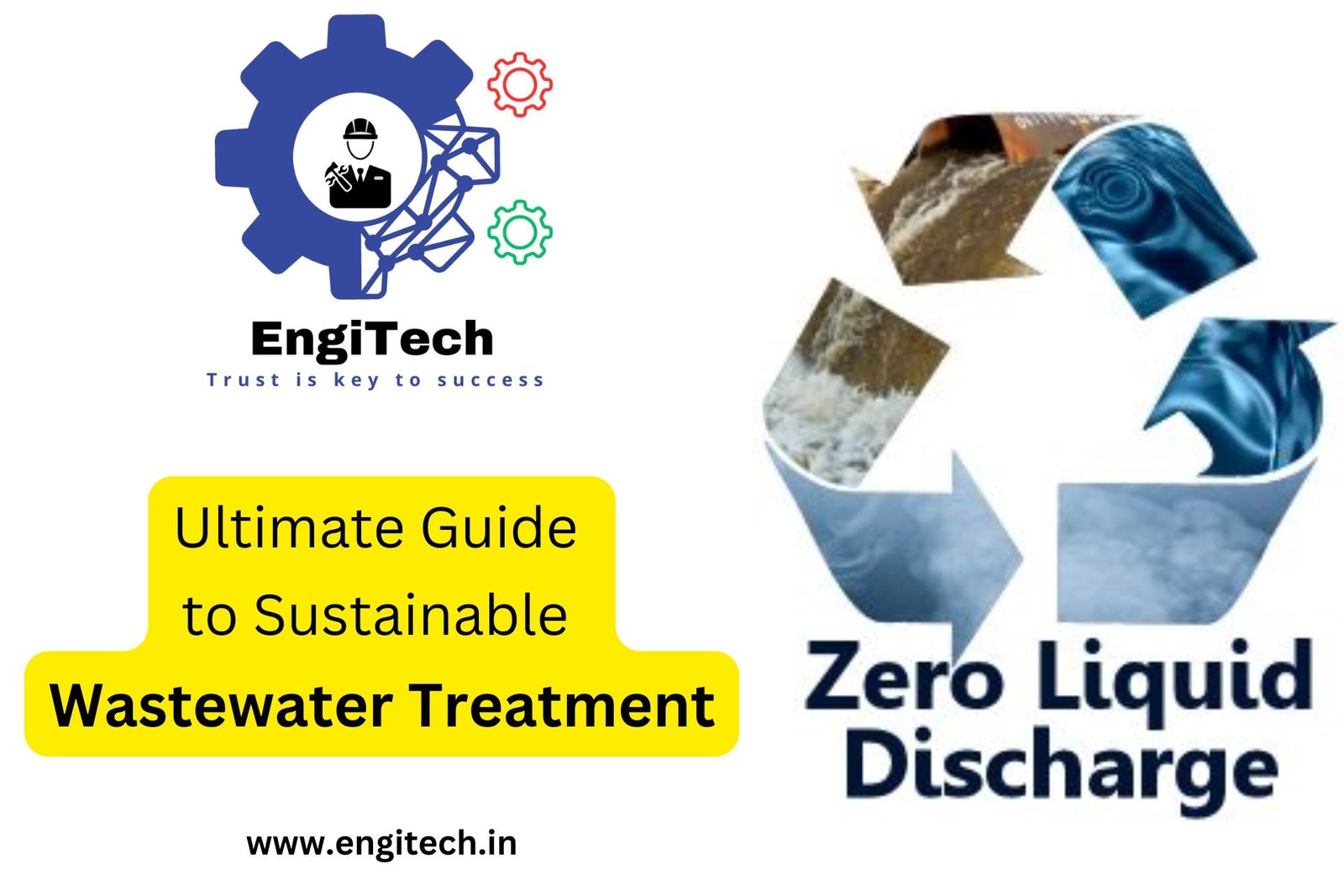Waste Management & Nuclear Energy Disposal: The Comprehensive Guide to Sustainable Solutions

In a world increasingly focused on clean energy and environmental stewardship, Waste Management & Nuclear Energy Disposal emerge as pivotal topics. Within the article , We spotlighted how mastering these processes is critical for global safety, ecological balance, and long-term sustainability. After all, effective waste management doesn’t just protect public health; it also safeguards the future of energy innovation. As nuclear energy gains traction as a low-carbon power source, handling its byproducts responsibly becomes even more significant. I
you’ll uncover expert insights and proven methods to address Waste Management & Nuclear Energy Disposal both safely and sustainably.
Table of Contents
By the end of this comprehensive guide, you’ll have a solid handle on everything from Nuclear Energy Waste Management strategies to real-world examples of innovation in Nuclear Disposal. Let’s dive in.
1. Why Waste Management & Nuclear Energy Disposal Matter
If you’ve ever wondered why governments and industries pour so many resources into Nuclear Energy Waste Disposal and broader Waste Management programs, the answer lies in long-term sustainability and public safety. Effective waste management:
- Prevents Environmental Contamination: Mismanaged nuclear byproducts can leak into soil, water, and air, posing serious health risks.
- Supports Public Health: Proper Nuclear Power Waste Management mitigates the danger of radiation exposure to communities.
- Facilitates Future Energy Projects: Without robust waste management protocols, the potential of nuclear energy as a green alternative might be overshadowed by safety concerns.
- Meets Regulatory Compliance: Governments worldwide have stringent guidelines, and failing to adhere can result in hefty fines and reputational damage.
A Historical Lens
Nuclear energy’s rise began mid-20th century, promising a cleaner alternative to fossil fuels. However, early disposal methods were rudimentary compared to modern standards. Several incidents of leaks and contamination fueled public distrust and led to more stringent regulations.
Key Takeaway
Waste management—particularly in the nuclear sector—is not merely a regulatory checkbox. It’s a foundational aspect of ensuring that nuclear energy remains a reliable, safe, and sustainable power source.

2. Understanding the Basics of Nuclear Energy
Before diving deeper into Nuclear Disposal, it helps to grasp the essence of nuclear energy. Unlike traditional power generation that relies on combustion (and, by extension, greenhouse gas emissions), nuclear power plants generate electricity through nuclear fission—splitting atoms of uranium or other fissile materials to release heat, which then drives turbines to produce electricity.
How Nuclear Power Stacks Up
- Low Carbon Footprint: Nuclear plants emit far fewer greenhouse gases during operation compared to coal or natural gas plants.
- High Energy Density: A small amount of uranium can produce far more energy than an equivalent quantity of fossil fuels.
- Challenges with Waste: The process produces radioactive waste, which can remain hazardous for thousands of years if not managed correctly.
Balancing Pros and Cons
Critics point to historical accidents and the challenge of Nuclear Energy Waste Management as significant downsides. Proponents argue that advancements in technology, along with strict regulations, make modern nuclear facilities safer than ever.
3. Different Types of Radioactive Waste
Not all radioactive waste is created equal. Understanding these categories illuminates why the disposal and management strategies vary.
- Low-Level Waste (LLW)
- Examples: Contaminated lab clothing, cleaning materials, or equipment with minor radioactive traces.
- Management: Usually disposed of in near-surface facilities, as it decays to safe levels over relatively short periods.
- Intermediate-Level Waste (ILW)
- Examples: Reactor components, certain chemical sludges, materials used in reprocessing.
- Management: Requires shielding to protect workers and the public; disposal often involves deeper storage than LLW.
- High-Level Waste (HLW)
- Examples: Spent nuclear fuel or waste generated from reprocessing spent fuel.
- Management: The most hazardous category, HLW remains radioactive for millennia, necessitating robust isolation and storage solutions such as deep geological repositories.
- Transuranic Waste (TRU)
- Examples: Materials contaminated with elements heavier than uranium (like plutonium) from nuclear weapons production.
- Management: Generally disposed of in deep geological facilities.
Why Classification Matters
Each category demands a unique approach to Nuclear Energy Waste Management. The complexity and cost of disposal typically escalate with the level of radioactivity and half-life of the waste.
4. Energy Waste Management in Context
Energy Waste Management covers more than nuclear materials—it also includes the disposal of byproducts from coal, natural gas, solar panel production, and other energy sources. However, none matches nuclear waste in terms of long-term hazard. Although solar panel end-of-life waste and coal ash each carry their own environmental challenges, the Nuclear Disposal question often takes center stage due to the intensity and duration of its risk.
Comparisons with Other Energy Sources
- Fossil Fuels: Coal ash contains heavy metals like mercury and arsenic, but these typically do not remain dangerous for thousands of years.
- Solar & Wind: Manufacturing solar panels involves hazardous chemicals, but the waste management concerns focus on safe recycling rather than extreme radioactivity.
- Bioenergy: Mostly organic waste that, while it can emit greenhouse gases if mishandled, doesn’t pose a radiological hazard.
Integrating Renewable and Nuclear
Many experts argue for a diversified energy mix—renewables like wind and solar backed up by stable, low-carbon nuclear power. But that synergy only becomes viable if Nuclear Energy Waste Disposal is handled meticulously. This intersection underscores why advanced Nuclear Power Waste Management strategies are essential for a sustainable energy future.

5. From Generation to Disposal: The Nuclear Fuel Cycle Explained
To fully appreciate Nuclear Disposal, one must understand the nuclear fuel cycle, which typically includes:
- Mining and Milling: Uranium ore is extracted and milled into a concentrated form known as “yellowcake.”
- Conversion and Enrichment: The yellowcake is converted into a gas and enriched to increase the concentration of the fissile isotope 235U^{235}\mathrm{U}.
- Fuel Fabrication: Enriched uranium is manufactured into fuel pellets, then loaded into fuel rods and assemblies.
- Reactor Operation: Fuel rods undergo fission in a reactor, generating heat that produces electricity.
- Spent Fuel Cooling: Used fuel rods are removed and cooled in spent fuel pools to reduce heat and radioactivity.
- Reprocessing or Disposal: Spent fuel can be reprocessed to extract usable materials or designated for direct disposal.
Where Waste Manifests
- Mining Residues: Rocks, tailings, and leftover materials can remain radioactive.
- Spent Fuel: After being in a reactor for several years, the spent fuel becomes HLW.
- Process Materials: Equipment and fluids used during reprocessing or reactor operation can contain radioactive residues.
Understanding these stages helps clarify the complexity of Nuclear Energy Waste Management and underscores why disposing of spent fuel and related byproducts is so critical.
6. Storage and Isolation Techniques
The cornerstone of Nuclear Disposal success lies in long-term storage and isolation methods designed to keep radioactive material out of the environment.
6.1 Spent Fuel Pools
- Location: On-site at nuclear power plants.
- Purpose: Spent fuel rods require cooling due to residual heat generation.
- Duration: Typically stored in pools for at least five years or longer, until radioactivity and heat levels subside.
6.2 Dry Cask Storage
- When Used: After spent fuel has cooled sufficiently in pools.
- How It Works: Fuel assemblies are placed in steel canisters or casks, often surrounded by concrete.
- Benefits: A safer, more stable method for long-term on-site storage, reducing reliance on water-based cooling.
6.3 Deep Geological Repositories
- Gold Standard of Disposal: Involves entombing HLW deep underground in stable geological formations such as salt beds, clay, or granite.
- Notable Projects: Finland’s Onkalo repository and the proposed Yucca Mountain site in the United States.
- Challenges: Public opposition, cost, and ensuring geological stability over millennia.
Why Isolation Matters
Radioactive isotopes in spent nuclear fuel can remain hazardous for tens of thousands of years. Geological repositories aim to keep these materials isolated from the biosphere until radioactivity diminishes to safe levels. This approach involves intricate engineering solutions paired with natural geological barriers.
7. Emerging Technologies and Innovations
As concerns about climate change intensify, the impetus to refine Nuclear Energy Waste Management grows. Numerous innovations are underway to minimize waste volume, improve safety, and even repurpose certain byproducts.
7.1 Advanced Reactor Designs
- Next-Gen Reactors: Some designs, like fast reactors and molten salt reactors, promise to use spent fuel more efficiently, reducing the overall waste volume.
- Benefits: Extend fuel life cycles and minimize the quantity of high-level waste.
7.2 Partitioning and Transmutation
- Partitioning: The process of separating long-lived isotopes from the spent fuel.
- Transmutation: Converting these long-lived isotopes into shorter-lived or stable forms using neutron bombardment.
- Outcome: Potentially reduces the time frame for which waste remains highly radioactive from millennia to centuries.
7.3 Space Disposal (Conceptual)
- Concept: Launching high-level nuclear waste into outer space.
- Hurdles: Extremely high cost and catastrophic risk if a launch fails.
- Current Status: Remains speculative and not part of mainstream disposal strategies.
7.4 AI and Robotics
- Role: Automated systems for remote handling, sorting, and monitoring of waste.
- Advantage: Minimizes human exposure and improves precision in waste processing.
Balancing Innovation and Regulation
While scientific progress offers promising methods, each new technique must pass through rigorous safety, environmental, and regulatory approvals—often a lengthy and expensive process.
8. Regulatory Framework and Oversight
Global agencies such as the International Atomic Energy Agency (IAEA) set broad guidelines for Nuclear Energy Waste Management. Each nation, however, enacts its own regulations, often enforced by dedicated bodies like:
- U.S. Nuclear Regulatory Commission (NRC)
- Euratom in the European Union
- Nuclear Regulation Authority (NRA) in Japan
Key Aspects of Regulation
- Safety Standards: Define exposure limits, operational protocols, and technical requirements.
- Environmental Impact Assessments: Mandate risk evaluations before starting waste disposal or storage projects.
- Licensing and Inspections: Regular audits ensure compliance and transparency.
- Public Engagement: Involving local communities and stakeholders in decision-making to build trust and address concerns.
Continuous Evolution
Regulations continue to adapt alongside technological advancements, public attitudes, and scientific discoveries. Effective oversight fosters both Nuclear Energy Waste Disposal innovation and accountability, ensuring that mistakes of the past are not repeated.
9. Environmental and Health Implications
No conversation about Nuclear Disposal is complete without acknowledging potential risks to ecosystems and public health.
9.1 Short-Term Health Concerns
- Radiation Sickness: Direct exposure to high-level radioactive material can cause acute radiation syndrome.
- Local Contamination: Leaks or accidents may contaminate surrounding air, water, and soil, threatening agriculture and biodiversity.
9.2 Long-Term Effects
- Cancer Risks: Prolonged exposure to low-level radiation can increase the likelihood of cancers, although global consensus varies on the exact correlation levels.
- Generational Impact: Radioactive materials remain hazardous for timescales that surpass many human generations. Effective isolation is imperative to prevent exposure far into the future.
9.3 Ecological Sensitivity
- Marine Life: Coastal or underwater disposal has been attempted historically, but environmental impacts can be devastating if leaks occur.
- Biodiversity: Radioactive contamination can disrupt reproductive cycles and genetic material in wildlife, with lasting ecological consequences.
The Role of Monitoring
Advanced monitoring systems track radiation levels in real-time, providing early warnings if containment fails. These systems are essential for maintaining public trust and ensuring swift corrective measures.

10. FAQs on Nuclear Power Waste Management
Optimizing for a Featured Snippet often involves answering the most pressing user questions in a concise format. Below are some common queries related to Nuclear Power Waste Management:
- Q: Why can’t we just dump nuclear waste into the ocean?
A: Ocean dumping can contaminate marine ecosystems, harm biodiversity, and pose severe long-term risks. International treaties generally prohibit such practices today. - Q: How long does nuclear waste remain radioactive?
A: It depends on the isotope. Some forms remain dangerous for hundreds of years, while others pose risks for tens of thousands of years or more. - Q: What happens if a nuclear repository leaks?
A: Monitoring systems are designed to detect leaks early. Immediate measures typically include sealing the leak, recovering waste if possible, and decontaminating affected areas. - Q: Can nuclear waste be recycled?
A: Some countries reprocess spent fuel to extract usable isotopes, although the practice is costly and politically sensitive. - Q: Is nuclear energy truly a clean energy source?
A: It’s considered low-carbon rather than fully “clean,” given the radioactive waste disposal challenges. However, in terms of greenhouse gas emissions during operation, it’s significantly cleaner than coal or natural gas.
11. Practical Steps for Individuals and Communities
While large-scale Nuclear Energy Waste Management policies fall under governmental and industrial domains, individuals and communities also play roles in shaping policy, ensuring safety, and driving innovation.
11.1 Community Engagement
- Public Hearings: Attend community meetings about nuclear facilities or waste disposal projects.
- Citizen Committees: Join advisory groups that liaise with regulatory bodies.
11.2 Educational Initiatives
- School Programs: Encourage STEM education focusing on nuclear science and environmental stewardship.
- Public Workshops: Collaborate with NGOs or local universities to host informational sessions on Nuclear Disposal.
11.3 Grassroots Advocacy
- Petitions and Letters: Communicate concerns or support for nuclear projects and waste management strategies to elected officials.
- Social Media Campaigns: Use digital platforms to raise awareness, share updates, and mobilize public opinion.
11.4 Household Sustainability
- Reduce, Reuse, Recycle: While not directly related to Nuclear Energy Waste Disposal, general waste reduction behaviors can foster a culture of environmental responsibility.
- Energy Efficiency: Lowering household energy demand can reduce reliance on both fossil fuels and nuclear power, easing waste disposal pressures.
Collaborative Responsibility
Whether you’re an industry professional, policy maker, or concerned citizen, addressing Nuclear Disposal demands collective action. By staying informed and engaged, communities can influence more responsible and sustainable practices.
Conclusion and Call-to-Action
Waste Management & Nuclear Energy Disposal stand at the forefront of modern environmental challenges. As we expand our arsenal of low-carbon energy solutions to combat climate change, Nuclear Energy Waste Management cannot be an afterthought—it’s a linchpin of public trust, ecological safety, and the long-term viability of nuclear power. Effective Nuclear Disposal strategies, backed by rigorous research, innovative technology, and transparent governance, have the power to transform nuclear energy from a subject of cautionary tales into a cornerstone of global sustainability.
Ready to Learn More or Take Action?
- Comment Below: Have insights or questions about nuclear waste disposal? Join the conversation.
- Share on Social Media: Spread the word so others can stay informed.
- Explore Related Articles: Check out our resources on renewable energy strategies and policy frameworks to continue your sustainability journey.
Through collective awareness and decisive action, we can make Nuclear Power Waste Management not just safe, but an essential pillar of our clean energy future.
Stay Connected with EngiTech
EngiTech is your trusted source for in-depth knowledge on industrial mechanical engineering machines and technologies. Stay ahead with the latest innovations, expert insights, and practical guides designed to help you make informed decisions for your business and engineering needs. Join our growing community of professionals and industry leaders to stay updated and competitive in the ever-evolving world of industrial technology.


